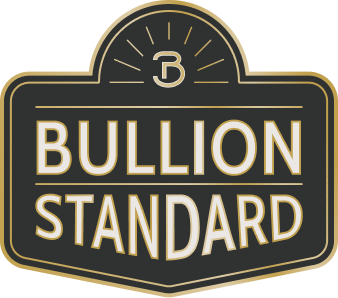Weighing Quarters: Key to Evaluating Precious Metal Investments
By Bullion Standard ·
5 min read

Luxury gold bullion business representing opulence and prosperity.
Why Coin Weight Matters in Precious Metal Investments
In the world of precious metal investments, even the smallest nuances, like the weight of a coin, can have significant impacts. Quarters, beyond their practical use in shopping carts and vending machines, hold essential lessons for investors. Not only do they illustrate how changes in composition and weight over time can alter a coin's value, but they also underscore the importance of understanding these characteristics across all precious metal investments. This article aims to illuminate the critical role coin weight plays in evaluating precious metal investments and provide a roadmap for utilizing this knowledge in broader investment strategies.
Understanding the weight and composition of coins like quarters helps investors discern the intrinsic and collectible values inherent in these pieces. These factors often dictate market prices, driven by scarcity, demand, and the all-important variable of metal content. Armed with this understanding, investors can navigate the complexities of the bullion and coin markets with greater confidence.
Key Points to Consider When Evaluating Precious Metal Coins
- Weight and Purity:
At the heart of any precious metal investment lies its weight and purity. Consistent weight suggests predictable value, while deviations may hint at other intrinsic properties or historical significance. Knowing the weight and purity of coins such as modern and historical quarters enables investors to more accurately assess their value. When considering weight, it's also essential to remember that a heavier silver quarter indicates a potentially higher intrinsic value due to greater silver content.
- Historical and Modern Coin Weights:
Coin weights have fluctuated significantly over history, often reflecting changes in economic conditions, minting technology, and material availability. For instance, U.S. quarters minted before 1965 contained 90% silver and weighed 6.25 grams, offering a stark contrast to modern quarters, which weigh 5.67 grams and are composed of copper and nickel. Understanding these historical shifts can inform current investment strategies by providing context on how economic factors may drive future changes.
- Industry Standards and Certifications:
Industry standards and certifications play a pivotal role in verifying the authenticity and purity of precious metal coins. These standards, often implemented through professional grading and certification agencies, assure investors of a coin's weight and content. This helps maintain market trust and liquidity. Recognizing these certifications allows investors to confidently trade while ensuring their collection's integrity through proven industry benchmarks.
Examples of Precious Metal Coin Weights
- US Quarters:
The U.S. mint has evolved its coins significantly, reflecting economic challenges and shifts in demand for base metals. Modern quarters, weighing 5.67 grams, are markedly different from their silver precursors, which previously weighed 6.25 grams. The "silver quarter weight" directly influences its market value, driven by historical compositions of 90% silver.
- Gold Coins:
Popular gold coins like the American Eagle or the Krugerrand are well-known for their standardized weights, such as the 1-ounce variety. These coins are rigorously manufactured to ensure consistent purity and weight, making them favorable investments for those seeking both security and liquidity. Understanding each gold coin's weight and purity helps investors target strategies aligned with market trends and spot prices.
- Platinum Coins and Other Bullion:
Platinum coins, like the American Platinum Eagle, are celebrated for their rarity and precision in weight. Similarly, silver bullion varies in size and weight, ranging from small coins to larger bars, with each type offering unique benefits to investors. For example, despite numerous silver bullion types available, those interested in substantial investments might choose larger bars which often offer lower premiums per ounce compared to smaller pieces.

Maximizing Investment Strategies with Coin Weight Insights
The weight and value of coins, including quarters and beyond, are integral to any informed investment strategy in precious metals. A deep understanding of these elements allows investors to tap into historic trends and evaluate current market situations more effectively. Coupling this knowledge with modern standards and certifications significantly improves an investor's ability to make sound, profitable decisions. Armed with these insights, investors can strategically diversify their portfolios across gold, silver, and platinum to optimize returns while managing risks.
In today's dynamic market landscape, a profound comprehension of coin weights and compositions can serve as valuable tools for enhancing investment outcomes. As always, an awareness of historical changes and industry standards further empowers investors to make informed, strategic decisions in the realm of precious metals.
Frequently Asked Questions (FAQ)
1. How does the weight of a quarter impact its value as a precious metal investment?
The weight can determine if a quarter includes precious metals like silver, affecting its collectible and intrinsic value.
2. What factors should investors consider when evaluating the weight and purity of precious metal coins?
Investors should consider the coin's material composition, historical significance, and current market demand.
3. How can the historical weight of precious metal coins inform current investment strategies?
Studying historical weights can reveal trends in market value and guide future investment choices.
4. What are the advantages of diversifying investments across different precious metals, such as gold, silver, and platinum?
Diversification can reduce risk and improve potential returns by leveraging price fluctuations across metals.
5. How do industry standards and certifications affect the perceived value of precious metal bullion?
These standards ensure reliability, authenticity, and trust in the market value of bullion.
Coin Weight: Your Investment Ally
Understanding the intricacies of coin weight and its impact on precious metal investments is crucial in today's dynamic market. Whether you're assessing the value of quarters or considering larger investments in gold or platinum, Bullion Standard offers a range of valuable resources to guide your decisions. Visit our Silver products page and discover how precise knowledge of weight and composition can enhance your investment strategies.





















